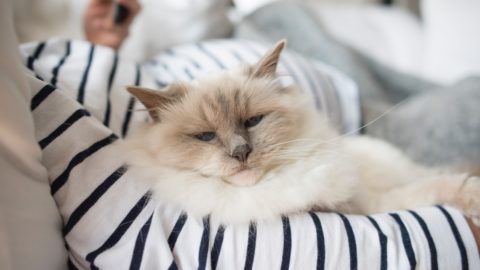In a 2012 study published in the Journal of Feline Medicine and Surgery, Certified Applied Animal Behaviorist Dr. Emma Grigg and colleagues examined the preference of 28 cats, each provided with a covered and an uncovered litter box. Boxes were cleaned daily and waste was measured in each box. The authors found no overall preference for litter box type across subjects. Individual data revealed that 4 cats preferred the covered box and 4 cats preferred the uncovered box. Implications for intervention include the suggestion that cats should be offered both types so that any individual preference can be assessed but that blanket recommendations for uncovered litter boxes are not necessarily justified. The full abstract is below.
Grigg, E.K., Pick, L., & Nibblett, B. (October, 2012). Litter box preference in domestic cats: covered versus uncovered. Journal of Feline Medicine and Surgery
Feline inappropriate elimination (periuria and/or perichezia) remains a very common behavioral complaint of cat owners. Treatment recommendations often include improving the attractiveness of the litter boxes available to the cat. One frequent recommendation is to avoid covered litter boxes, although this has not previously been tested experimentally. The goal of this study was to assess whether, all else being equal, cats preferentially used uncovered litter boxes over covered litter boxes. Twenty-eight cats were enrolled in the study and offered the choice of a covered or uncovered box. Waste was scooped daily from each box, and the weight of waste in the different box styles was compared and evaluated using paired t-tests and χ2 analyses. Overall, there was no significant difference between use of the two box styles. Eight individual cats did exhibit a preference (four for covered, four for uncovered), but individual preference results are not evenly distributed, with more cats than expected showing no preference between litter box types. We postulate that, if boxes are kept sufficiently clean (ie, once daily minimum cleaning), most cats will not show a preference for either box type. The observation that a minority of cats in the study exhibited a preference supports the recommendation of providing individual cats a ‘cafeteria’ of litter box styles, including a covered box, to determine whether such a preference exists. These findings add to existing literature on the topic of feline inappropriate elimination and provide additional information for clinicians providing treatment recommendations for cats exhibiting this behavior.







